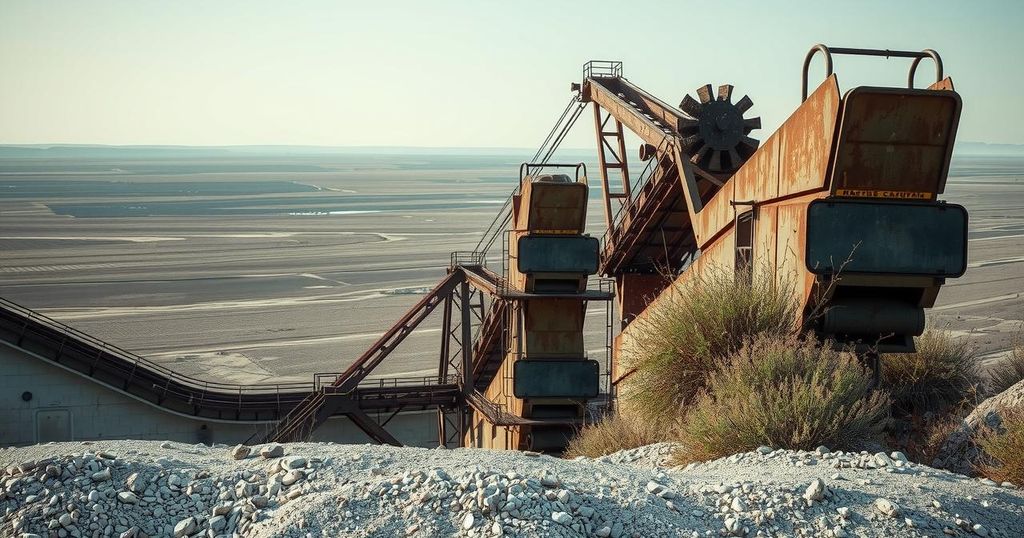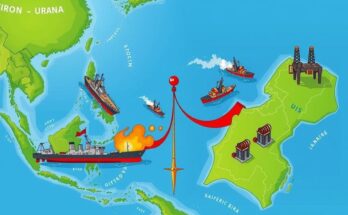A general strike in Om Laarayes, Tunisia, resulted in the closure of schools and businesses, protesting deteriorating infrastructure following a fatal road accident. The URT labor union demands urgent improvements in infrastructure and healthcare, highlighting the struggles faced by the impoverished community despite its phosphate wealth, which remains largely untapped due to social unrest.
In a significant protest, schools and businesses in Om Laarayes, a prominent mining town in Tunisia, ceased operations on Thursday due to a general strike over deteriorating infrastructure, prompted by a recent tragic road accident. The strike, organized by the regional URT labor union, part of the influential UGTT trade federation, highlighted urgent demands for improvements in infrastructure and healthcare services in the southwestern town.
URT secretary-general Mohamed Sghaier Miraoui confirmed, “All schools, shops and local institutions have shut down in protest against the deteriorating state of infrastructure.” The strike was initiated following a catastrophic collision on Tuesday between a bus and a truck, resulting in six fatalities and nine injuries.
Miraoui expressed, “This tragic accident has sparked outrage among residents of our neglected region.” He further lamented that such incidents are common due to the inadequate public infrastructure and emphasized the urgent need for attention to the community’s health resources, stating that local medical facilities are poorly equipped to provide even basic emergency care.
Contrary to its phosphate wealth, Om Laarayes remains notably underdeveloped, hosting around 40,000 residents. Miraoui stressed that due to its natural resources, “Our town should be among the main regions with infrastructure.” Many inland towns within Tunisia experience social and economic difficulties unlike their wealthier coastal counterparts.
Since the revolution of 2011, which dismantled the long-standing regime of Zine El Abidine Ben Ali, protests have surged in these underprivileged regions demanding essential infrastructure improvements and job opportunities linked to phosphate production. The mining center of Gafsa has notably been at the forefront of these demands, as local populations seek to revitalize phosphate extraction programs for economic stability.
Tunisia’s phosphate production peaked at eight million tons in 2010; however, current output has dwindled to roughly half that amount due to insufficient investment and constant social unrest. Phosphates are critical for fertilizers and remain one of Tunisia’s few natural resources.
In summary, the strike in Om Laarayes emphasizes the urgent need for infrastructural improvements and healthcare services, highlighted by a recent tragic accident that has stirred public outrage. The ongoing socio-economic struggles in Tunisia’s inland areas, despite the region’s phosphate wealth, reflect deep-rooted disparities and persistent challenges that have remained unresolved since the 2011 revolution. Protests are likely to continue until the government addresses these critical issues.
Original Source: www.arabnews.com




